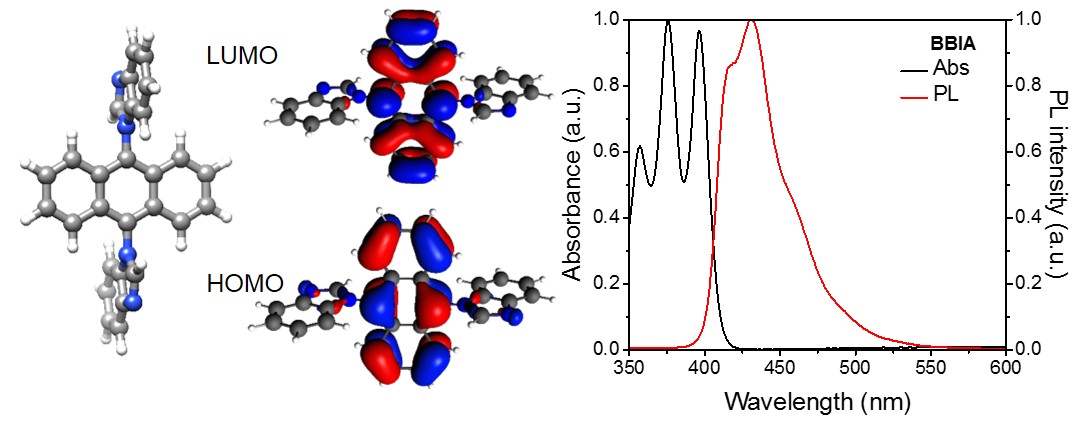[J. Mater. Chem. C] Efficient Perovskite Nanocrystal Light-Emitting Diodes Using Benzimidazole-Substituted Anthracene Derivative as the Electron Transport Material
In collaboration with the Fromm group (Univ. Fribourg), we report a new high-electron-mobility transport material for efficient perovskite quantum dot LEDs.

Colloidal nanocrystals of organic-inorganic hybrid perovskites (OIHPs) are an emerging class of solid-state lighting materials owing to their outstanding photophysical properties. Considerable research efforts have been focused on the fabrication of high-performance light-emitting diodes (LEDs) based on these materials, including the interface engineering which is essential to balance the electron and hole injection in device. Here, we report efficient perovskite nanocrystal LEDs using a new electron transport material (ETM), 9,10-bis(N-benzimidazolyl) anthracene (BBIA), possessing a high electron mobility of 4.17×10-4 cm2 V-1s-1 at the electric field of 105 V cm-1. Compared to the control devices based on the ETM of 2,2',2"-(1,3,5-benzinetriyl)-tris(1-phenyl-1-H-benzimidazole) (TPBi), the BBIA devices exhibit a nearly two-fold enhancement, increasing the current and external quantum efficiencies from 6.25 cd A-1 and 1.51% to 12.2 cd A-1 and 2.96%, respectively. In addition, a small degree of efficiency roll-off of 8±1% at the luminance of 2000 cd m-2, as well as a low turn-on voltage of 2.35 V, have been demonstrated. The anthracene-based compounds may open new research opportunities for interface engineering in perovskite LEDs.
